Oh yes,
I forgot to mention that the Kit provides a template in Plywood...makes things even easier!
I forgot to mention that the Kit provides a template in Plywood...makes things even easier!
 |
As a way to introduce our brass coins to the community, we will raffle off a free coin during the month of August. Follow link ABOVE for instructions for entering. |
 |
 |
The beloved Ships in Scale Magazine is back and charting a new course for 2026! Discover new skills, new techniques, and new inspirations in every issue. NOTE THAT OUR FIRST ISSUE WILL BE JAN/FEB 2026 |
 |
Your log and details are very helpful and will be a great resource for me when I start my Diana.And now the Gun Ports:
Be aware that the dimensions on sheet 1 are the inner space (13 x 11 mm). The Gun Ports should be 16 mm long and 14 mm wide. Because you have to install a frame using strips of 1 x 6 mm on the inside to fill the gaps between external and internal wall strips...See picture off the Hull!
Having said this: I am going to install a 3mm thick Plywood plate between the Bulkheads...
As shown in the photo, I then paste the drawing with the gunports and draw the opening of the gunports...knowing that I still have to adjust the dimensions. In my opinion, this offers many advantages: it is easy to indicate the correct position of the Gunports and before gluing the plywood, I can more easily mill or cut the Gun Port openings....
Your opinions ?????
Marc
View attachment 462312
View attachment 462313
View attachment 462314
View attachment 462315
View attachment 462316
View attachment 462317
View attachment 462318
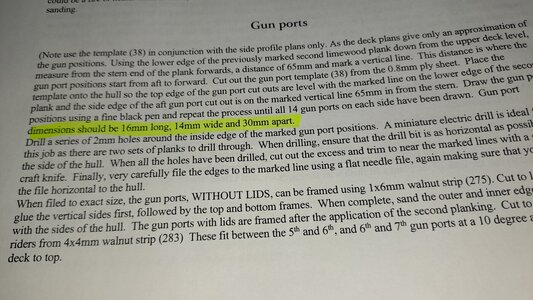
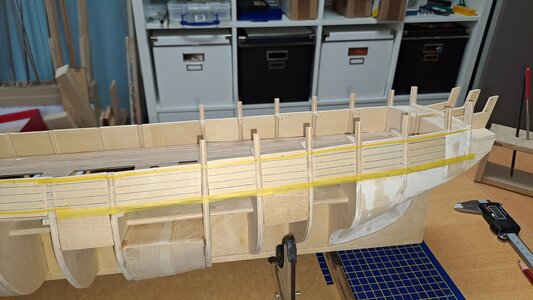
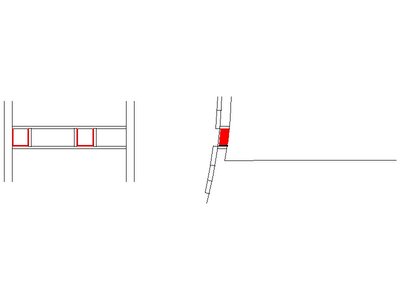
Hello Allan,Does the template account for the stops inside the frames and on the lower sill? Not sure this would apply in your case but when I have built POB I built the gun ports with overly long upper and lower sills between the bulkheads then the sides that would be frames if POF. The lower sill and sides then give a base for the three stops, one on top of the lower sill and the two on the sides of what would be acting as frames. There was typically no stop under the upper sill as some kits incorrectly show. The stops were only about 1.5" thick (in red below.) The below is the basic idea, but can be modified to meet the needs of any individual model.
Allan
View attachment 462539
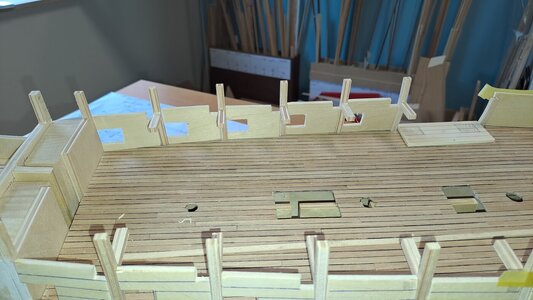
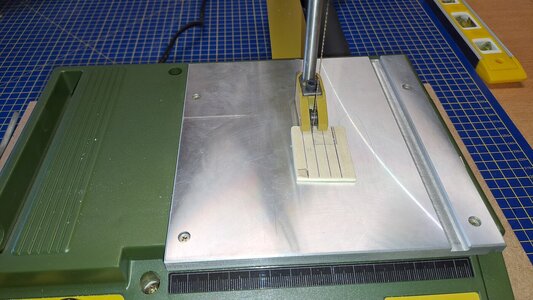
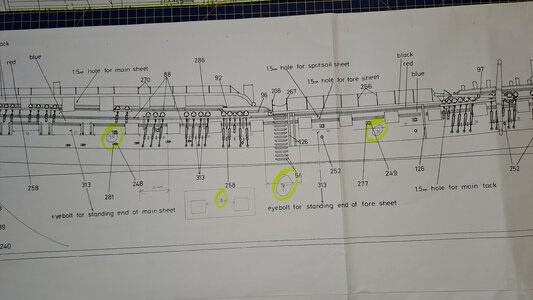
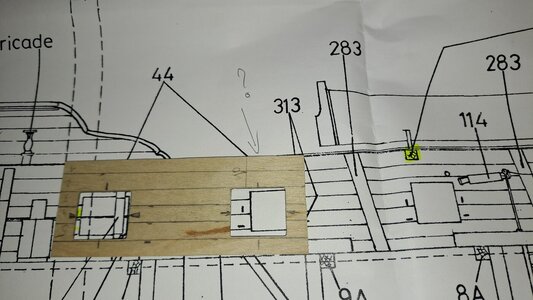











EXCELLENT POINT!! Caution is needed to say the least.If you follow the contemporary drawings, you are at risk that all other parts will not match as they are suitable for the kit drawings.
Allan,EXCELLENT POINT!! Caution is needed to say the least.
Allan
I think It is a smart decision, I would stick to the kit's designed plans when it comes to the structured parts like the hull but would bash all the deck furniture, definitely guns and fittings, masts, and rigging, which is also a good candidate, IMHO.If I want to avoid even bigger problems, it seems wisest to stick to the Kit's plans: everything is tailored to this (well... everything?)...
Dear Allan,Hi Fly
In response to your question I was a kit builder growing up then stopped completely in the early sixties. But when I took up the hobby again about 1980 I have been scratch building other than two kits about 20 years ago which I bashed. Going to scratch early on as an adult was economics in my case as it was a choice of feed our young family or buy a kit. It is much easier today for scratch and even kit bashing with us having the information so easily available. Back before the internet (good grief I am old) it was the library and book store.
Allan











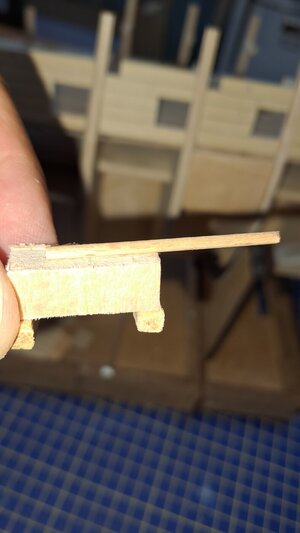
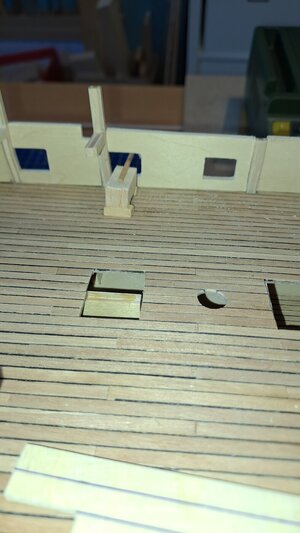
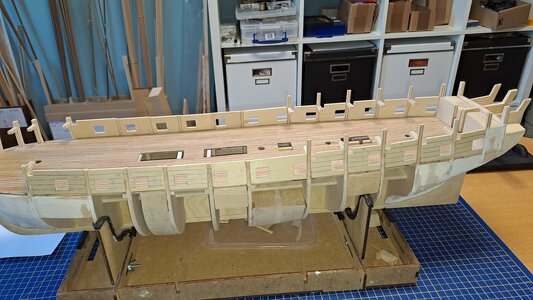
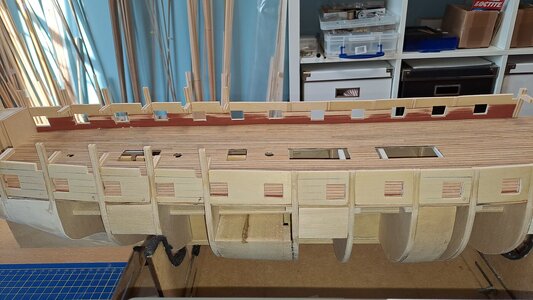

I agree Mustafa, these are all great to have and I feel lucky to have them but none of them are essential. The photo below was built without any of the tools you mentioned as there was no electricity available at the time in England (1775)The essential basic machines you will need to build from scratch are; sander, circular saw, jigsaw (which you already bought). In addition, a lathe and milling machine that will help you do things more smoothly and faster.
 (Interestingly in doing a quick search Britain began using electricity in the 1880s with the installation of the first public electricity generator in Godalming, Surrey in 1881,) Keep in mind that many find the words "fast" and "shipmodeling" are oxymoronic.
(Interestingly in doing a quick search Britain began using electricity in the 1880s with the installation of the first public electricity generator in Godalming, Surrey in 1881,) Keep in mind that many find the words "fast" and "shipmodeling" are oxymoronic.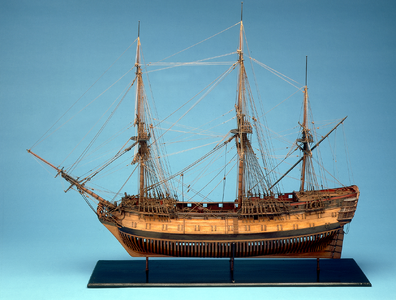
PS2
I'm proud to present you my newest invention: the first Belgian 24 pounder GUN
Work in progress and I'm very very satisfied with the method I applied: it goes very very smoothly and accurate!!!!!!!!!!!!!!!!!!!!!!!!!!!!!!!!!!!!!





 Precision first!
Precision first!
Wow, they were very patient people. The idea of building a model from scratch without any machinery seemed really scary to me. Thank goodness we have electricity and machines today.agree Mustafa, these are all great to have and I feel lucky to have them but none of them are essential. The photo below was built without any of the tools you mentioned as there was no electricity available at the
